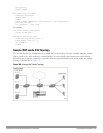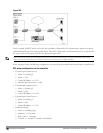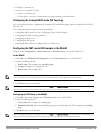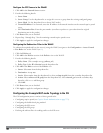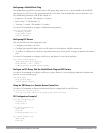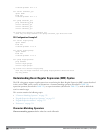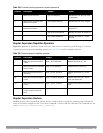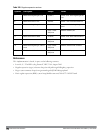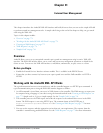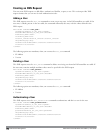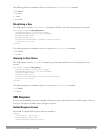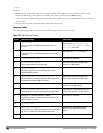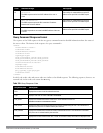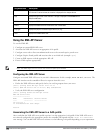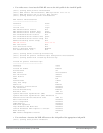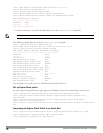
DellPowerConnectW-SeriesArubaOS6.2 | User Guide ExternalUser Management | 774
Chapter 41
External User Management
This chapter introduces the ArubaOS XML API interface and briefly discusses how you can use the simple API calls
to perform external user management tasks. A sample code listing at the end of the chapter to help you get started
with using the XML API.
Topics in this chapter include:
l "Overview" on page 774
l "Working with the ArubaOS XML API Works" on page 774
l "Creating an XML Request" on page 775
l "XML Response" on page 776
l "Sample Code" on page 784
Overview
ArubaOS allows you to set up customized external captive portal user management using its native XML API
interface. The XML API interface allows you to create and execute user management operations on behalf of the
clients or users. You can use the XML API interface to add, delete, authenticate, or query a user or a client.
Before you Begin
l Enable the External Services Interface software module. This is available in the PEFNG license.
l Ensure that you have connectivity between your captive portal server and the Dell controllers via HTTP or
HTTPS.
Working with the ArubaOS XML API Works
The typical interaction between your external server and the controller happens over HTTPS post commands. A
typical communication process using the XML API interface happens as follows:
1. An API command is issued from your server in XML format to the controller. The XML message or request can
be composed using a language of your choice using the format described in the "Creating an XML Request" on
page 775. Sample code in
C
gives a simple example. See the "Sample Code" on page 784.
2. The controller processes the XML request and sends the response to the authentication server in the XML
format. The XML request is sent using HTTPS post. The common format of the HTTPS post is
https://<controller-ip>/auth/command.xml. See "Creating an XML Request" on page 775 for more
information.
3. You can use the response and take appropriate action that suit your requirements. The response from the
controller is returned using predefined formats. See the "XML Response" on page 776 for more information.



